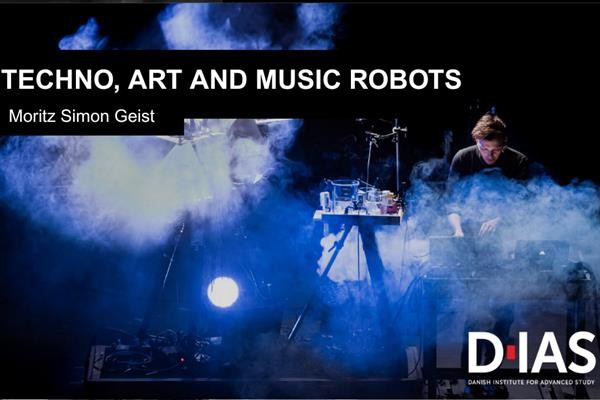Upcoming events
Talk: Techno, Art, and Music Robots
With Moritz Simon Geist
When and where
8 October 2025
11:00-12:15
DIAS Auditorium, SDU Odense
Moritz Simon Geist is a German artist and robotics engineer, well-known for his wildly viral videos like the "Popcorn Jazz Robot" and the giant drum robot "MR-808." With a background in electrical engineering and a passion for hands-on sound creation, Geist's work is driven by a desire to interact physically with music. His robotic instruments are crafted using advanced technologies such as 3D printing, CNC milling, and laser cutting and have been shown all around the world.
In this talk, Geist will give insight into his art practice, share how he stopped working with human musicians and started working with music robots, and explain why AI music robots will not replace human musicians (soon).
READ MORE ABOUT THE EVENT HERE

The talk will be followed by a workshop with invited speakers Matthias Wieser, Andrea Tesanovic, Jonas Jørgensen. See below.
Organizer: Kathrin Maurer, Professor for Culture and Technology at SDU, and Leader for Center of Culture and Technology at SDU
Contact: kamau@sdu.dk
This event is supported by IRELTS, DIAS, and the Centre for Culture and Technology.
Workshop: Interacting Robots in Everyday Lives: Artistic Perspectives
With Matthias Wieser, Fara Peluso, Andrea Tešanović, and Jonas Jørgensen
Sponsored by the DIAS Cluster on Wicked Problems “Interacting Robots in Everyday Life and the Transformation of Society”, Center for Culture and Technology at SDU, Biomachines Project sponsored by The Velux Foundations.
Organizer: Kathrin Maurer, Professor for Culture and Technology at SDU, and Leader for Center of Culture and Technology at SDU
Contact: kamau@sdu.dk
When and where
8 October 2025
13:00-16:00
DIAS Seminar Room, SDU Odense
Speakers